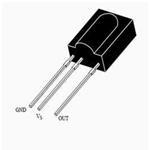Coefficient of Fluctuation of Energy : It is defined as the ratio of the maximum fluctuation of energy to the work done per cycle. It is usually denoted by CE. Mathematically, coefficient of fluctuation of energy,
CE = Maximum fluctuation of energy/ Work done per cycle
The workdone per cycle may be obtained by using the following relations:
1. Workdone / cycle = Tmean × θ
where Tmean = Mean torque, and
θ = Angle turned in radians per revolution
= 2 π, in case of steam engines and two stroke internal combustion engines.
= 4 π, in case of four stroke internal combustion engines.
The mean torque (Tmean) in N-m may be obtained by using the following relation i.e.
Tmean = (60 × P) /2πN = P / ω
where P = Power transmitted in watts,
N = Speed in r.p.m., and
ω = Angular speed in rad/s = 2πN / 60
2. The workdone per cycle may also be obtained by using the following relation:
Workdone / cycle = P × 60 / n
where n = Number of working strokes per minute.
= N, in case of steam engines and two stroke internal combustion
engines.
= N / 2, in case of four stroke internal combustion engines.
The following table shows the values of coefficient of fluctuation of energy for steam engines and internal combustion engines.
Table 1. Coefficient of fluctuation of energy (CE) for steam and internal combustion engines.
Reference A Textbook of machine design by R.S.Khurmi and J.K.Gupta














